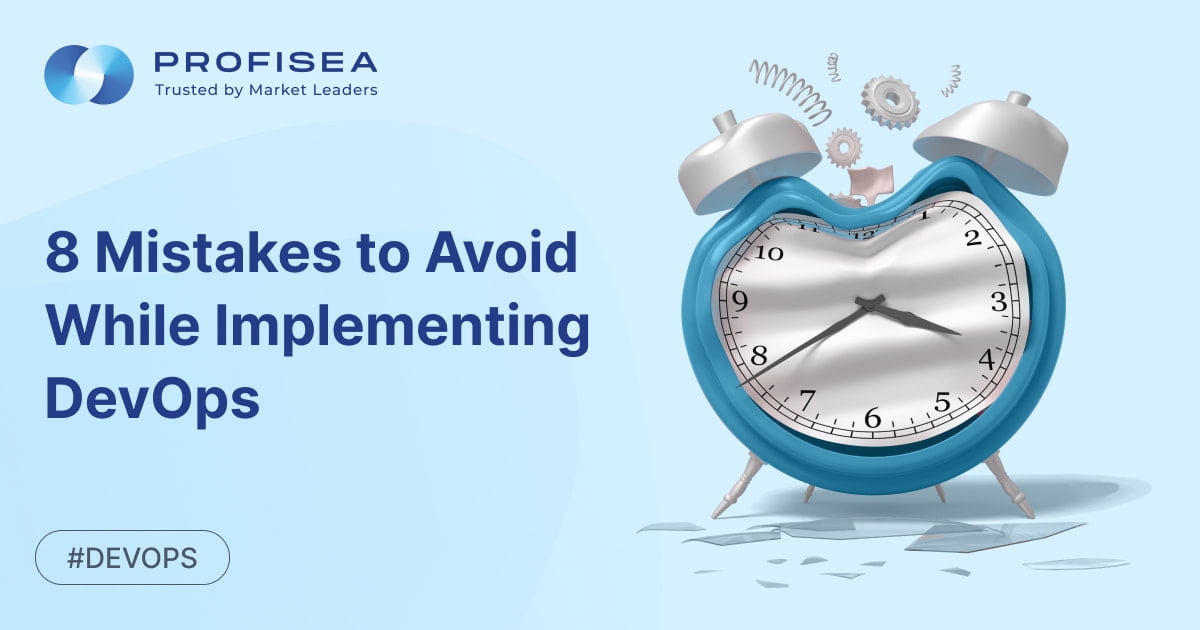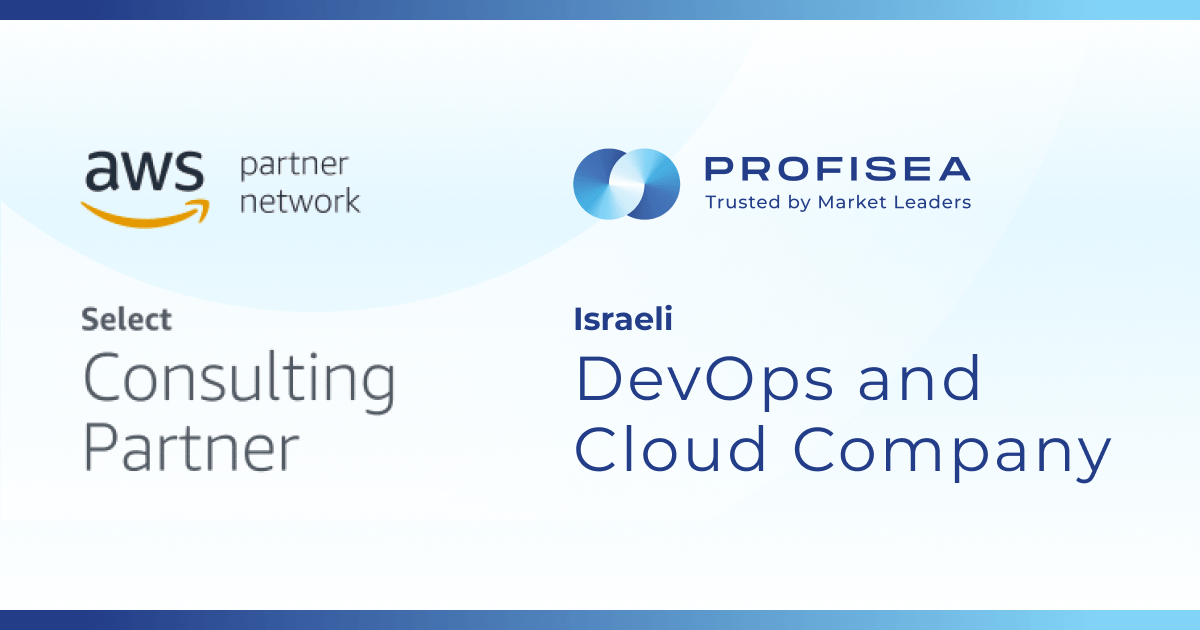8 Mistakes to Avoid While Implementing DevOps
From startups to giant corporations, DevOps has become an essential part of software development almost everywhere. According to the 2021 State of DevOps Report by Puppet, 83 percent of IT decision-makers say their organizations are adopting DevOps practices to boost business value through better quality software, better delivery times, more secure systems, and the codification of principles. However, within that 83 percent, not every company could declare full success in applying DevOps principles. Cultural blockers, DevOps strategy blunders, poor planning — all these factors might be the biggest obstacles in the DevOps transformation. What are the pitfalls companies often step in while implementing DevOps and how to avoid them? But first, let’s briefly look at what DevOps is all about and how it can boost product delivery.
DevOps and its main advantages
As the name suggests, DevOps stands for development and operations. The main goal of this methodology is to integrate development, quality assurance, and operations in a single, uninterrupted process. What are the advantages of DevOps for business? Here are three ways how it can improve deployment.
- Better quality of product releases. DevOps accelerates product release by launching continuous delivery, bringing faster feedback, and helping developers fix bugs at the very beginning.
- Faster response to evolving customer needs. The customer is always right, and DevOps allows developers to work with requirements and requests faster, adding or improving existing features. Thus, the time-to-market and value-delivery rates increase.
- More comfortable working environment. Adopting DevOps principles results in more effective and productive communication, and a better working environment overall.
With many valuable benefits of DevOps, its actual implementation remains challenging for business. There’s no one-size-fits-all approach to adopting DevOps and some organizations find themselves in a desperate situation after spending thousands of dollars on DevOps with no significant improvements. What are the common traps companies fall into while introducing DevOps in their workflows?
DevOps implementation mistakes your IT business should learn from
Mistake #1. Oh, my big plan
Successful innovators ‘think big but start small,’ but speaking of implementing DevOps, many organizations end up in the opposite situation. They start big and try to adopt the new approach everywhere. However, large-scale projects are usually more time-consuming and challenging to tackle, resulting in delays and disappointment. Creating a dedicated DevOps department in the organization is also not a matter of one day. It costs thousands of dollars and takes months to find and hire DevOps specialists. DevOps engineers are the most in-demand job title in 2021, according to the DevOps Institute. Last but not least, big changes on the organizational level can lead to tensions and resistance inside the team.
Solution:
Actually, starting small with DevOps can be the best. When commencing your DevOps transformation, it’s wise to start with small-scale projects, check how it works for a small team, generate tangible benefits to demonstrate them to the whole business, and then scale up. However, the scope of your first project shouldn’t be too small, as in this case, the success might look unconvincing. Outsourcing DevOps is also a great solution, as it helps to fix all the problems and implement DevOps fast and without spending money on recruiting.
Mistake #2. Hmm, what does DevOps mean?
According to Gartner, 75% of DevOps plans in 2022 will fail to meet expectations due to a lack of leadership and organizational change. George Spafford, Senior Director Analyst in Gartner says: “Organizational learning and change are key to allowing DevOps to flourish. In other words, people-related factors tend to be the greatest challenges — not technology.” What does it mean for business? DevOps has become somewhat a buzzword in recent years, so every organization wants to have it without understanding its real objectives and principles. Companies often overlook the importance of organizational changes and focus rather on DevOps tools than the staff. However, technologies don’t work without people and can’t replace the human touch. Any ambitious DevOps initiative will fail if employees aren’t ready for upcoming transformation, or don’t have time and resources to adjust.
Solution:
While introducing DevOps into business practices is a long walk, every stage of this venture needs to be well-prepared. Both employees and customers should understand what the term ‘DevOps’ means and the value it will produce before the changes happen. Training programs should involve not only core team players but the whole team to ensure that everyone is ready for the transformation. Moreover, organizations should prioritize business value, not DevOps tools. To avoid all these time-consuming processes, consider DevOps as a service. While most companies don’t have time to play long, DevOps services from experienced professionals are the best option.
Mistake #3. Let’s buy DevOps tools
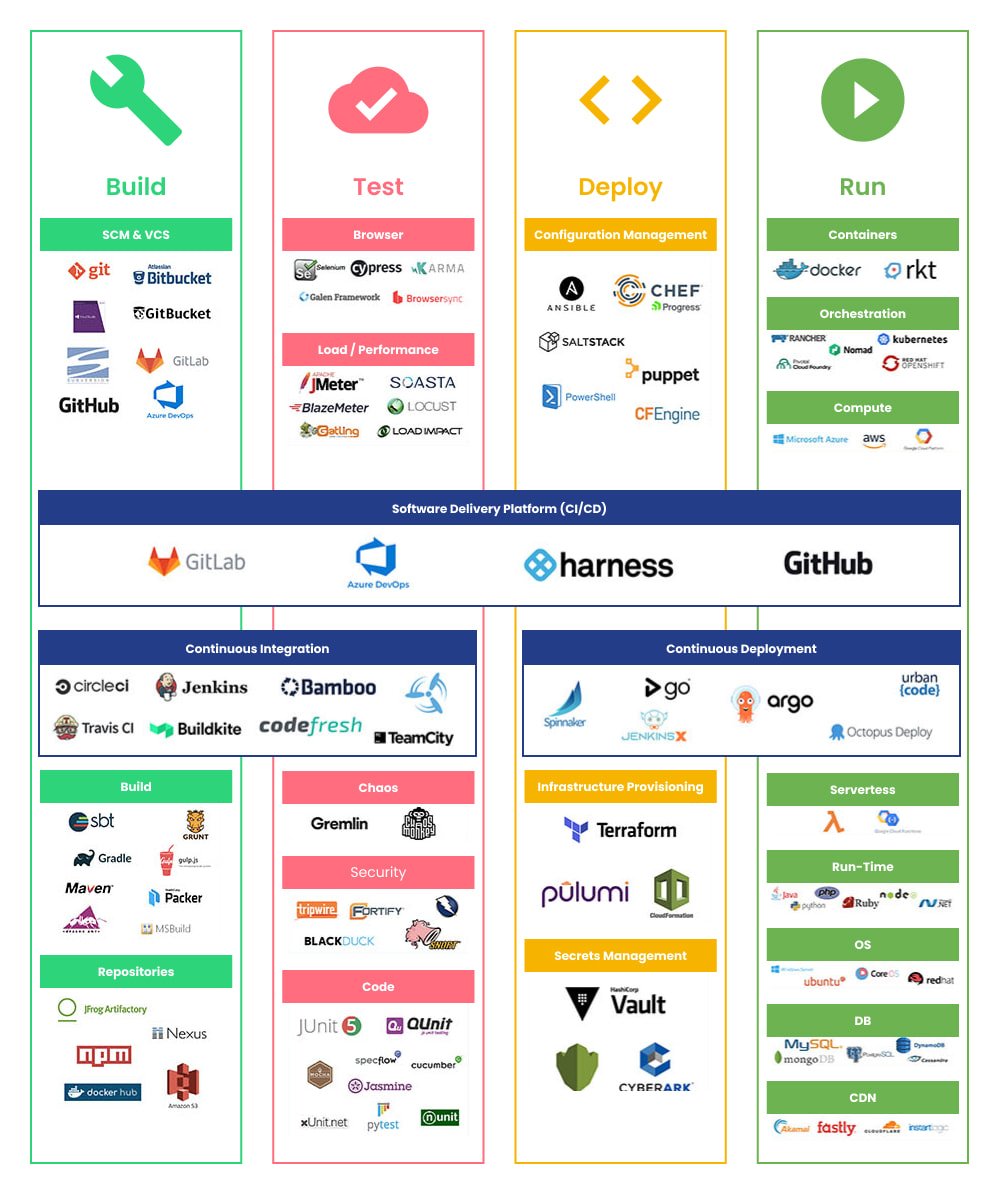
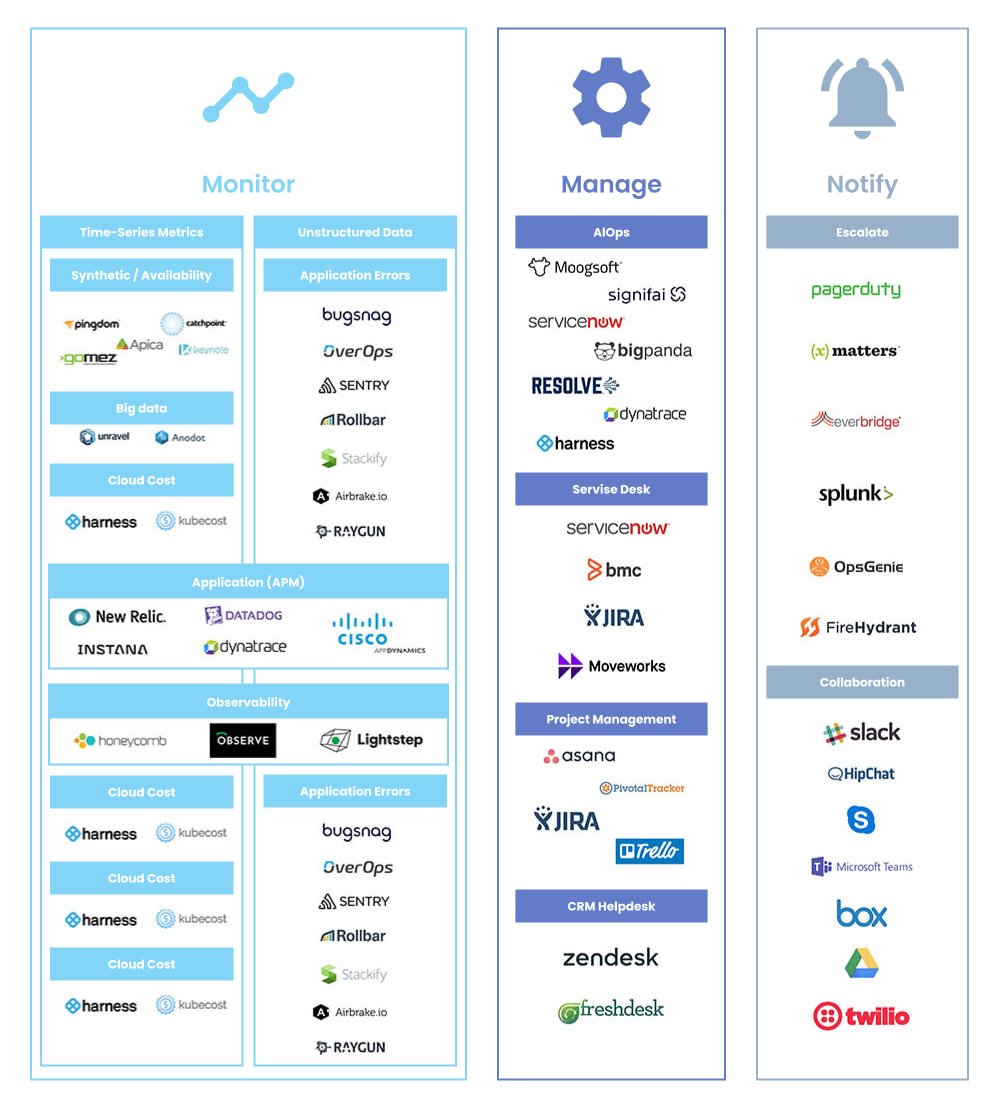
Source: harness.io
There are many cool tools and opportunities in DevOps that potentially can improve the performance of your team. For example, containers like Docker and Kubernetes have become quite popular in the DevOps community. According to a report from IBM, organizations that use containers experience real benefits across industries and geographies. 78% of respondents notice improved application quality and reduced defects, 73% — reduced application downtime, and 74% — higher customer satisfaction. Sounds impressive, so maybe your company needs to implement containers ASAP? Don’t make hasty decisions! All tools should be not only bought but also adopted and used by your team. Sometimes organizations spend money on the best DevOps on new technologies but just fail to make them work.
Solution:
Developing the right DevOps tool kit can be extremely hard for organizations just starting their DevOps journey.
Here are a few questions to consider while choosing DevOps tools that will benefit your business:
- is your team ready to implement this tool right now?
- how will it change the way you work?
- do you really need that tool?
The more complex the tool is, and the more the new toolchain changes the working process, the more time and effort the organization needs to adopt it. Another important thing to keep in mind — most tools severely complicate workflows and deployment. Sometimes, the better option is looking for simpler ways to solve the problem. Just because there is a promising DevOps tool, it doesn’t mean you need to purchase it.
If you’re overwhelmed by all the DevOps tools and don’t know which solutions are the best fit for your organization, then you might want to consider partnering with an experienced DevOps team. That’s where Profisea comes in. We can help on every stage of DevOps implementation by selecting the best DevOps tools that meet your unique business requirements and ensuring transparency, collaboration, and cross-functionality of your teams.
Mistake #4. DevOps can’t be measured
Things can be done only when they can be measured. DevOps isn’t an exception, so implementing DevOps without considering crucial metrics is doomed to failure. Without accurate analysis, you won’t be able to identify whether your DevOps strategy works for you or there are some aspects that should be revised and changed. In other words, it’s a huge mistake when the organization decides to adopt DevOps but doesn’t pay enough attention to metrics.
Solution:

Some of the critical metrics that should be utilized while assessing DevOps initiatives are deployment frequency, change lead time, and mean time to recovery (MTTR). Deployment frequency is one of the core criteria. It shows how fast code can pass through the organization and result in production. Using this indicator helps to evaluate how often your team is able to generate value and get information from customers. Change lead time indicates the lead time for code changes from the beginning of the cycle to the moment it is released. Deployment frequency and change lead time help to evaluate the overall efficiency of the development team.
Mean time to recovery (MTTR) is a metric that shows the average time the team needs to restore service, component, or system after an outage. Actually, one of the goals of DevOps is to reduce this time. If you see that MTTR only increases as the result of the DevOps implementation, this means that something is wrong with your DevOps strategy.
Mistake #5. Leave DevOps to IT department
The term ‘DevOps’ means the combination of Development and Operations, but it’s a huge mistake to think that the ‘Ops’ stands only for IT operations. While DevOps initiatives usually come from IT departments, and their members become agents of change, the DevOps transformation shouldn’t end there. Actually, this isn’t for continuous delivery only. DevOps triggers changes in company culture by enhancing communication and collaboration between different departments as well as improving product delivery.
Solution:
While starting your DevOps project, it’s essential to initiate changes at higher levels in the company. This strategy will help to break down the silos in the organization and cover all the steps in the value chain. If not doing this, DevOps can lead to suboptimization when the IT department will work on its own, and their improvements come out of alignment with the rest of the company. With our DevOps services, you get exactly what you need without overloading your IT department.
Mistake #6. Security? No, never heard about it
Cost of a Data Breach Report 2020 by IBM shows the shocking numbers — $3.86 million is the global average cost of a data breach and the average time to identify and contain a breach is 280 days. Moreover, only 16% of executives are convinced that their organizations are well-prepared to deal with cyber risk, according to McKinsey&Company. When it comes to integrating DevOps into business, security is a crucial aspect as even a small security vulnerability can result in catastrophic consequences. Therefore, managing security risks should never be left until the last minute.
Solution:
Security priorities should be defined in the first stages of DevOps implementation to avoid obstructing the product delivery with numerous changes and patches. DevSecOps is a good option too.
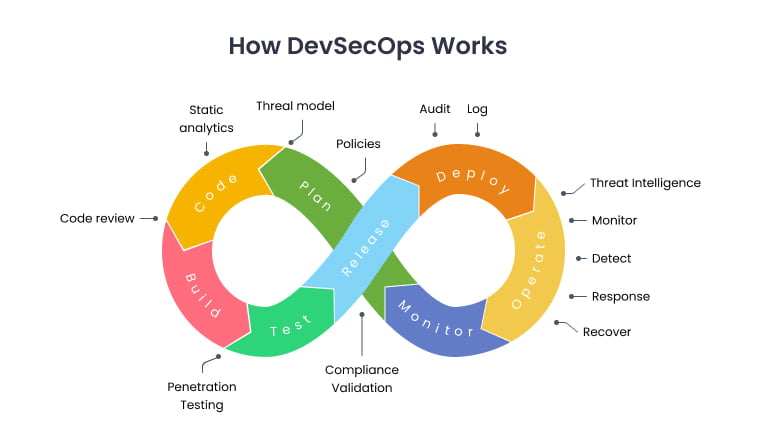
DevSecOps incorporates security and compliance testing into all stages of the DevOps lifecycle with big attention to processes, not just an approval gate before the product release.
Mistake #7. That sweet word ‘automation’
While many recommendations state that automation is a key to success and DevOps automation really has numerous benefits, it’s better to take this idea with a pinch of salt. The huge disadvantage of automation is that there is a necessity to maintain it, making the system more complex offering your automation capability. It can make your DevOps project too complicated during the first steps of implementation. For example, full unit test coverage of all code can make maintenance a super difficult task.
Solution:
It’s a smart idea to use automation gradually, considering high potential opportunities to automate different aspects of development. To use the full potential of automation, you need to start with CI/CD, then move to get QA in place. The final move is to assure that feedback continuously gets into the development pipeline to improve production.
Mistake #8. Our current documentation practices are the best
New approaches to development and operations require organizations to change their patterns of documentation writing. While traditional documentation practices might be something that your team is proud of, adopting DevOps won’t be successful without rethinking your content strategy and breaking down silos between the DevOp specialists and technical writers. With accelerating development and deployment, developers need accurate and up-to-date documentation from the earliest stages of a project, which is impossible without integrating writers into DevOps teams and helping them to adjust to the DevOps reality.
Solution:
Along with adopting CI/CD, it’s time to consider Continuous Documentation. Applying Continuous Documentation is able to reduce the gap between the codebase and code-specific knowledge, keeping all processes in sync. What are the main principles of Continuous Documentation? Documentation must be always up to date to match the current state of the codebase, created on a regular basis, and when it makes sense (for example, after a crucial bug has been fixed) and code-coupled to reference important parts of the code. As a result, this methodology of writing technical documentation allows to accelerate the inner development loop and improve agility in dev teams.
DevOps: mission impossible?
Whether you’re planning to start your DevOps journey or have already begun the implementation process, taking heed of the above considerations will help you reduce the chance of making painful DevOps mistakes and significantly increase the likelihood of project success. To make things easier, contact us and we’ll help you integrate DevOps into your workflows in a few simple steps and without any mistakes. Our experienced DevOps team carefully assesses your business needs, current development, and operation team structure and processes to suggest the best DevOps strategy for your business.
